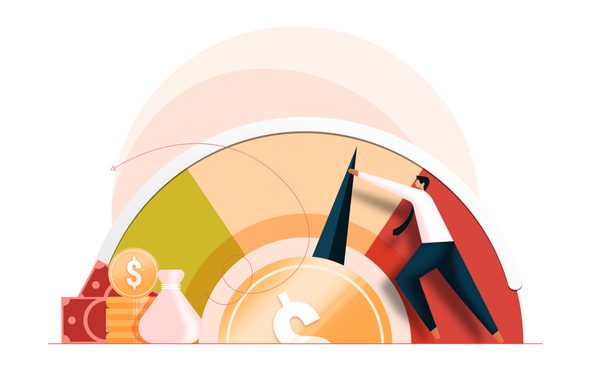Inflation, slow growth: former World Bank President David Malpass right for wrong reason. (Commentary)
Former World Bank president David Malpass thinks government policy is the primary cause of inflation and slow growth. I agree, but not for the same reasons.
Malpass makes three distinct arguments:
- Specific prices (“rising fuel prices and wage costs”) are the chief source of inflation risk.
- Higher economic growth can help us overcome a host of domestic and foreign policy challenges.
- The Federal Reserve should break its silence on Congress and the administrative state by calling out the “fiscal and regulatory roots of this inflation crisis.”
Let’s consider each of these in turn.
First, from an accounting standpoint, the dollar price of goods can contribute to inflation. Inflation means growth in a price index. Price indexes contain a basket of goods. Increases in the prices of some of those goods can drive overall inflation.
However, we should talk about inflation in a way that distinguishes it from relative price changes, meaning how much of other goods and services you have to give up. The mechanism we should be talking about is productivity. Is production in general getting easier or harder? This has major implications for how fast the economy’s supply of goods and services is growing relative to total dollar expenditure, and hence inflation.
Here’s the link to relative prices: When the costs of crucial inputs such as labor and energy goes up, it becomes more difficult to produce and distribute wealth. That’s going to drag down economic growth. For every percentage point of lost growth, all else being equal, the dollar depreciates one percent faster. The virtue of this framing is it doesn’t risk confusing dollar prices for relative prices. We can go straight to the cause: the relatively quicker growth of demand than supply.
This brings us to the second argument. I certainly think faster growth is good. We need a second supply-side revolution in this country. The political and administrative costs of producing goods and services are far too high. Even small differences in growth rates can have huge welfare effects when compounded. The difference between 3-percent growth and 2-percent growth seems trivial, but it means the economy doubles every 23 years instead of every 35 years. That’s huge.
But again, I worry about the framing. Inflation is falling quickly. Based on recent months of data, we’re very close to the Fed’s 2-percent target. If we try to push supply-side economics as an inflation-reduction strategy, we’re setting ourselves up for failure by banking on a problem that’s largely solved. There was a political moment to cheer the supply side a year ago, when inflation was 8 percent or more. Now, however, we should sell it the old-fashioned way: More stuff is good. Malpass does this quite nicely:
We need much faster growth to break out of our economic funk, lift median income, meet the geopolitical and technology challenge from China, pay for defense and debt service, lower the national debt, and take good care of an aging society.
Notice the rhetorical power of that sentence. Also notice it doesn’t mention inflation.
Finally, I’m not sold on the idea of the Fed wading into fiscal policy debates—and not just because I deny fiscal policy contributes to inflation. The Fed should answer to Congress, not the other way around. It’s proper for the legislature to craft the central bank’s mandate and change it as needed. I’m a big advocate of Congress reining in the Fed by forcing it to adopt a strict inflation target or nominal GDP target. But if the Fed begins criticizing fiscal and regulatory decisions, Congress would likely respond by further politicizing the Fed.
The Fed’s balance sheet is already being used as a partisan football. That’s partly the central bank’s fault, since it eagerly acquiesced to direct credit allocation in the 2008 and 2020 crises. But calling out Congress would compound the Fed’s mistakes, not fix them. Let’s also remember the extraordinary partisan skew (10:1 Democrat:Republican, with even stronger leanings among leadership) of Fed staffers. Even a good-faith campaign by the Fed to fix bad fiscal and regulatory policy would open the door to political meddling. Let’s be honest: Democrats have historically been bad on the issues Malpass wants to see fixed. If the Fed tries to use the bully pulpit, things will only get worse.
Malpass’s arguments are not wrong. I think he’s picking the right battles for the right reasons. My reservations are not about his ends, but his means. He would be on much stronger ground if he went all-in on the issues he highlighted in his closing paragraph. The Fed indeed should pursue “a stable dollar and smaller central bank bond holdings.” But that means the Fed should renew its focus on “fight[ing] inflation,” while we look for other ways to escape “the 2 percent growth funk.”
Originally published by the American Institute for Economic Research. Republished with permission under a Creative Commons Attribution 4.0 International License.
For more Budget & Tax News.











